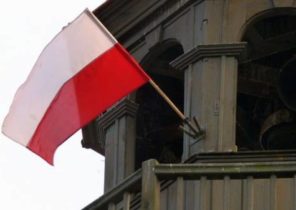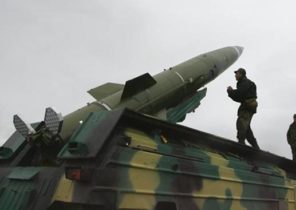The monuments of culture, as, indeed, the inhabitants of the cities, during very hard times in many wars, were forced to escape from the hardships of war and destruction, to move from place to place, away from different threats to them.
How to write a popular Daily Art, perhaps many of the current visitors to museums, galleries and exhibition halls, not once wondered how the treasure of world culture, presented to the visitors survived during the various turbulent events of human history. In this article you will learn about what efforts were made by employees of stores, and world-famous museums for the rescue of monuments of culture and art during the Second world war — one of the largest and most destructive wars in human history.
The Hermitage Museum
Since, as was established in the Palace of the Hermitage, he three times had experienced the evacuation of preserved monuments and works of art: the first time in 1812, when Russia fought a war with Napoleonic France, the other times during the revolution of 1917, and finally in 1941 during the great Patriotic war. On the first plan of emergency exits, that is, in connection with the events of 1812, the data remained very small. The plan was kept a great secret, and the extant documents preserved only a rough list of the exported items, but none of the authors of the plan, nor of those who took part in it, nor about the transport of the data list did not contain.
More all we know about the events related to the year 1941, when the Soviet Union was attacked by fascist Germany. We know that the evacuation actually began the day after the war began, that is 23 June, when the Museum staff began to inventory and the collection of monuments and works, due evacuation. It is not excluded that those who have done these jobs, knew something about the previous experiences of the evacuation, that is, those events which we do not know now almost nothing. A day earlier, that is still the morning of 22 June, the day the war began, the then Director of the State Hermitage Museum has already collected all of the employees who worked in the former Imperial Palace for an emergency meeting. From that moment started the urgent round-the-clock work on the inventory and preparation of monuments to transportation: employees never left the Palace even during sleep, using sleep and rest a conference hall of the Museum.
The work was very organized and almost without fail, what was the result of the fact that preliminary plans for the evacuation began, in fact, developed much earlier, namely in 1939 when the Second world war. The Soviet leadership it was already clear that the Soviet Union sooner or later will also have to join the war. As of July 1, 1941 the first batch of evacuees of Museum monuments and items has arrived to Sverdlovsk. The second batch of items evacuated from the Hermitage collection has also been successfully evacuated from the City on the Neva river and was safely delivered to the site on 23 July. A third batch to take out of town already failed — she had to leave in Leningrad, in connection with the beginning of the siege of the city fascist troops.
However, occasionally part of the collection still took out from the Museum, on the case of Hermitage Palace will suffer because of bombing or shelling.
But after lifting the siege of Leningrad, in 1944, organized the first exhibition, which presented part of the collection that remained in the city. The city has made preparations for this event of great importance, because for the residents of Leningrad, it symbolized a return to peaceful, normal life. And in 1945, after a period of restoration work, visitors had opened the first room in the Hermitage — the famous Hall of Rembrandt.
It was also an extremely important event not only for the city and the country, but for the whole world, as stored in the Hermitage collection of the famous Dutch painter was considered in the prewar years, the largest in the world. In fact, the reopening of the Hall of Rembrandt for the visitors meant the revival and the beginning of full operation of the Hermitage as the largest Museum and exhibition complex in Europe.
Evidence of clearly organized and conducted the evacuation of Museum objects was that during the war years of the famous treasures of the Hermitage were practically not lost any one piece. In fact, the only picture that was lost was the painting “Saint Sebastian” painted by another famous Dutch master painting of Anton van Dyck. The fate of the original of this painting is still unknown.
The state Russian Museum
A significant part of the collection of paintings of another famous Museum of Leningrad, the State Russian Museum, the war had to hide in specially constructed underground vaults. To evacuate the paintings and other items to protect them from damage, turned out to be impossible because of their large size. For example, the famous sculpture “the Empress Anna Ioannovna with a black boy” was hidden in an underground vault specifically dug in front of the entrance to the main building of the Museum.
With regard to major museums and exhibitions of the capital of the USSR Moscow, the evacuation is started immediately upon the outbreak of hostilities on the territory of the Soviet Union. The collection of the famous art Tretyakov gallery and the Pushkin Museum of fine arts named after A. S. Pushkin was taken to evacuate as a significant part of the Hermitage collection.
A considerable part of them was stored temporarily in the building of the future Novosibirsk’s Opera theatre (built in the years 1931-1941, ed. transl.). Surprisingly, these monuments were not just kept, but continued to serve the people even during the war. For the period from 1941 to 1944, until the return of the collections to Moscow in the largest city of Siberia and has held more than 20 exhibitions from the collection of the world-famous Tretyakov gallery.
The Museum “The Louvre”
Preparing for the evacuation in this world famous Museum is also started in advance: the Director of the Louvre Museum completed work on the evacuation plan exactly ten days before the start of the Second world war. The plan also implied a hidden evacuation to the location of collections does not become known to a possible enemy. On 25 August 1939 the Museum “Louvre” was closed for 3 days for visitors, under the pretext of preparing for the upcoming repairs and restoration. Meanwhile, the Museum staff placed the items in the collection on special white boxes. In the box was published by the famous painting “Mona Lisa”, and a marble statue of the goddess Nike of Samothrace. Before you place a painting or sculpture in a box, carefully wrapped in several layers of waterproof paper.
Throughout the war, all these monuments were kept in a special secret place in one of the suburbs of the city, but some of the items turned out to be impossible to move, and they were looted seized Paris in the summer of 1940 the Nazis. Thus was lost almost the entire collection of monuments of the Ancient Near East. But some items are missing from an ancient collection of archaeological sites have been able to detect after the Second world war they were returned to the Museum after restoration works.
The famous Veit Stoss Altar of the Church of the assumption of the virgin Mary was the most important landmark of the Polish city of Krakow, which will not exported and does not move during 450 years. But in 1940 it was decided to remove and to transport separated by more than 20 thousand fragments. All these fragments were wrapped in paper and placed in wooden boxes. The largest of these fragments, with a length of over 13 meters, was placed near the ceiling of the Sandomierz Cathedral. Other fragments were also removed and placed in different caches.
However occupied Poland the Nazis were able to detect removed and hidden fragments, and then they were taken to Germany.
Efforts and the efforts of a Polish art historian altar still managed to find and return to Poland in the postwar years. The pieces of the altar found in the mines in the courtyard of the Nuremberg castle. In the end, the famous monument of the Gothic, Veit Stoss, which was partly damaged by moisture and insects, while stationed in Germany in 1949, was sent to Poland special trains. At the railway station of Krakow, after the arrival of the squad, was organized by the national celebration in honor of a long-awaited return of the monument.
State Historical Museum
Again returning to Russia. The staff of the State Historical Museum of Moscow, immediately after receiving the orders of the city authorities about the evacuation of values, began preparations for the transport of the famous collection, including the famous ceremonial swords Prince Pozharsky, coat of Ivan IV and the coronation dress of Catherine the great.
Part of the collection had to be kept in underground storage. Part was shipped using a special vessel in the Kazakhstan city of Kustanai, where it was kept until 1944.
It is interesting to note that the state Historical Museum also continued work as a research center, and during the great Patriotic war. The Museum staff carried out works on search of documents and evidence related to the war, for future exhibitions that they have collected, in particular, military uniforms, examples of weapons, leaflets and proclamations, and of course, numerous photographs.







